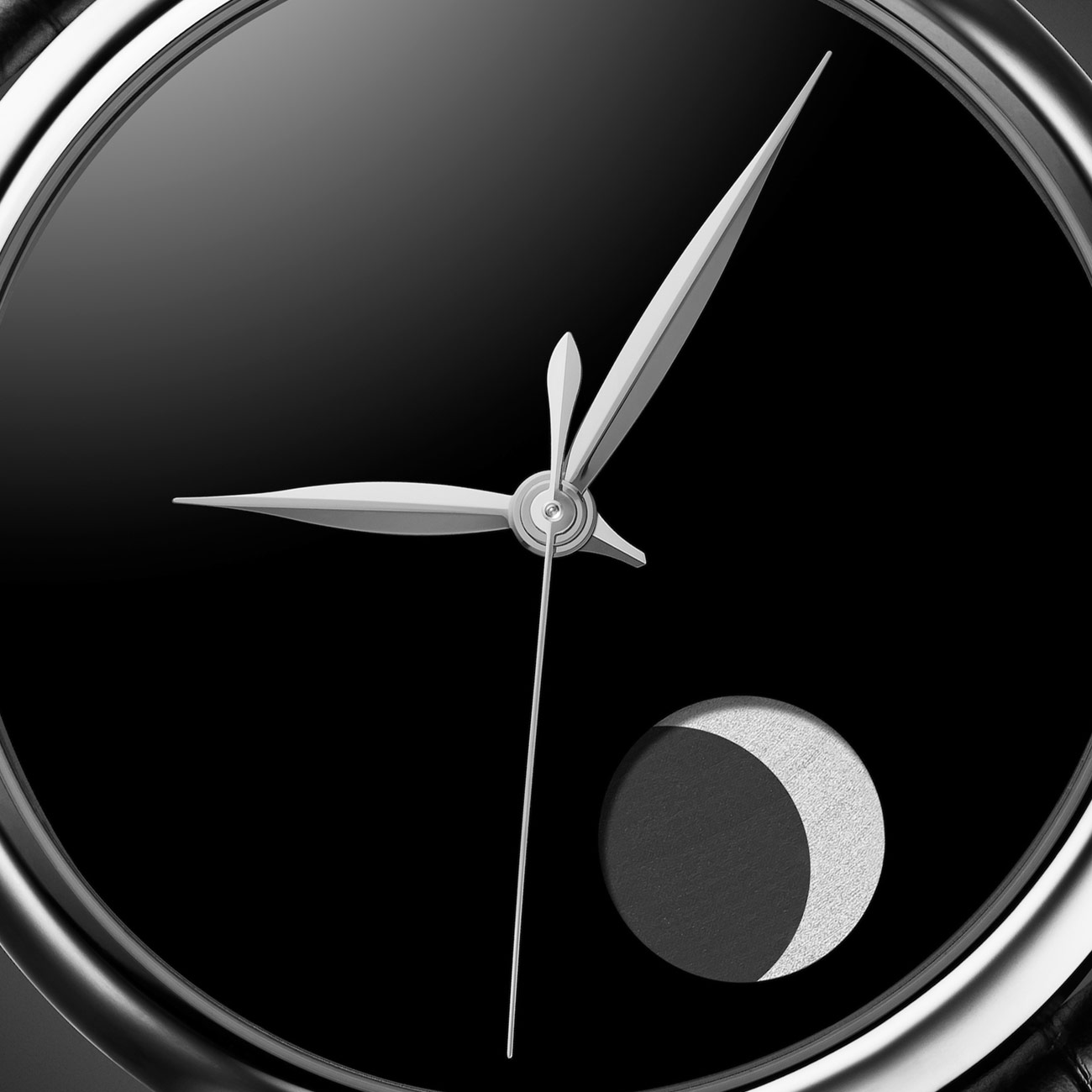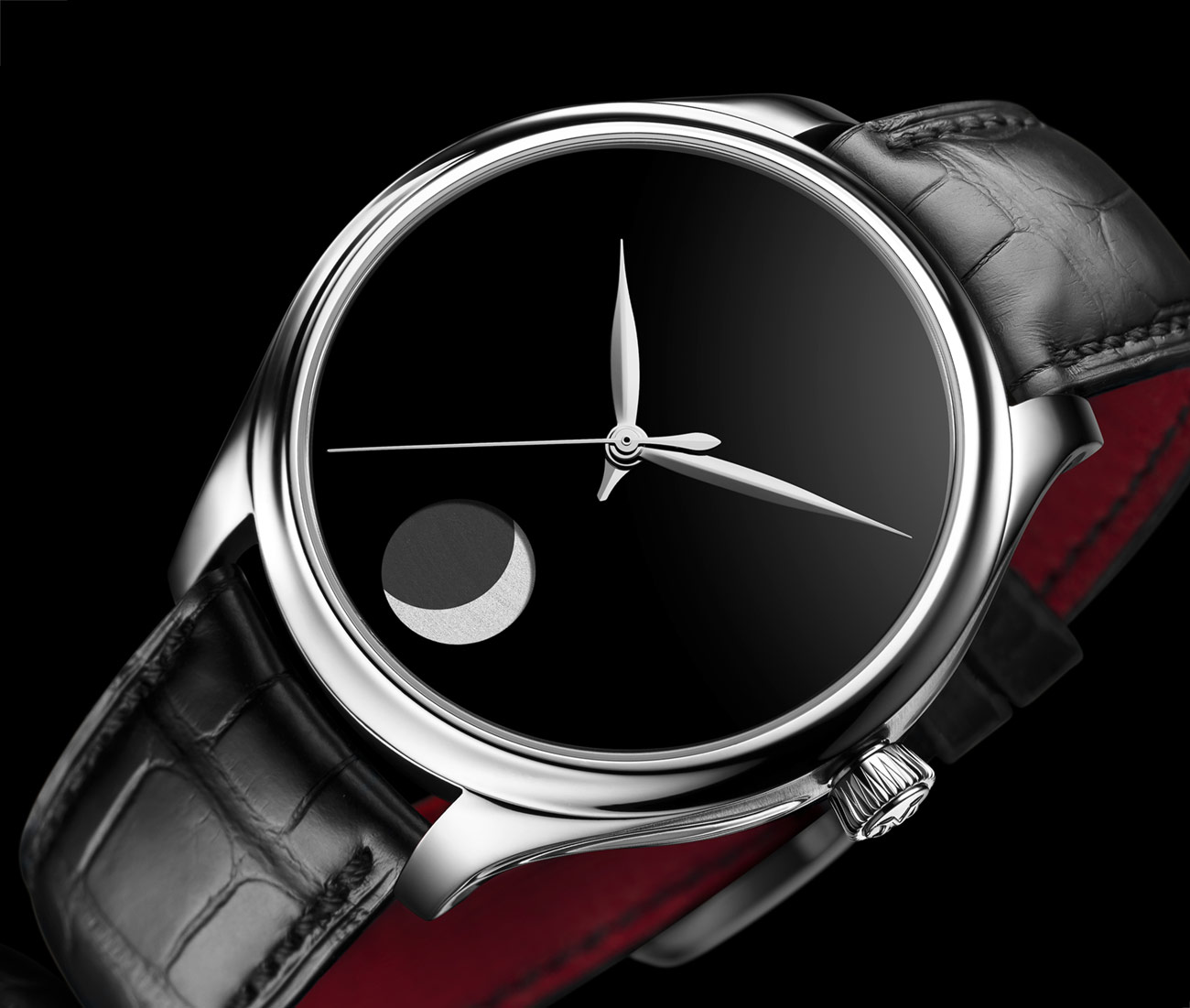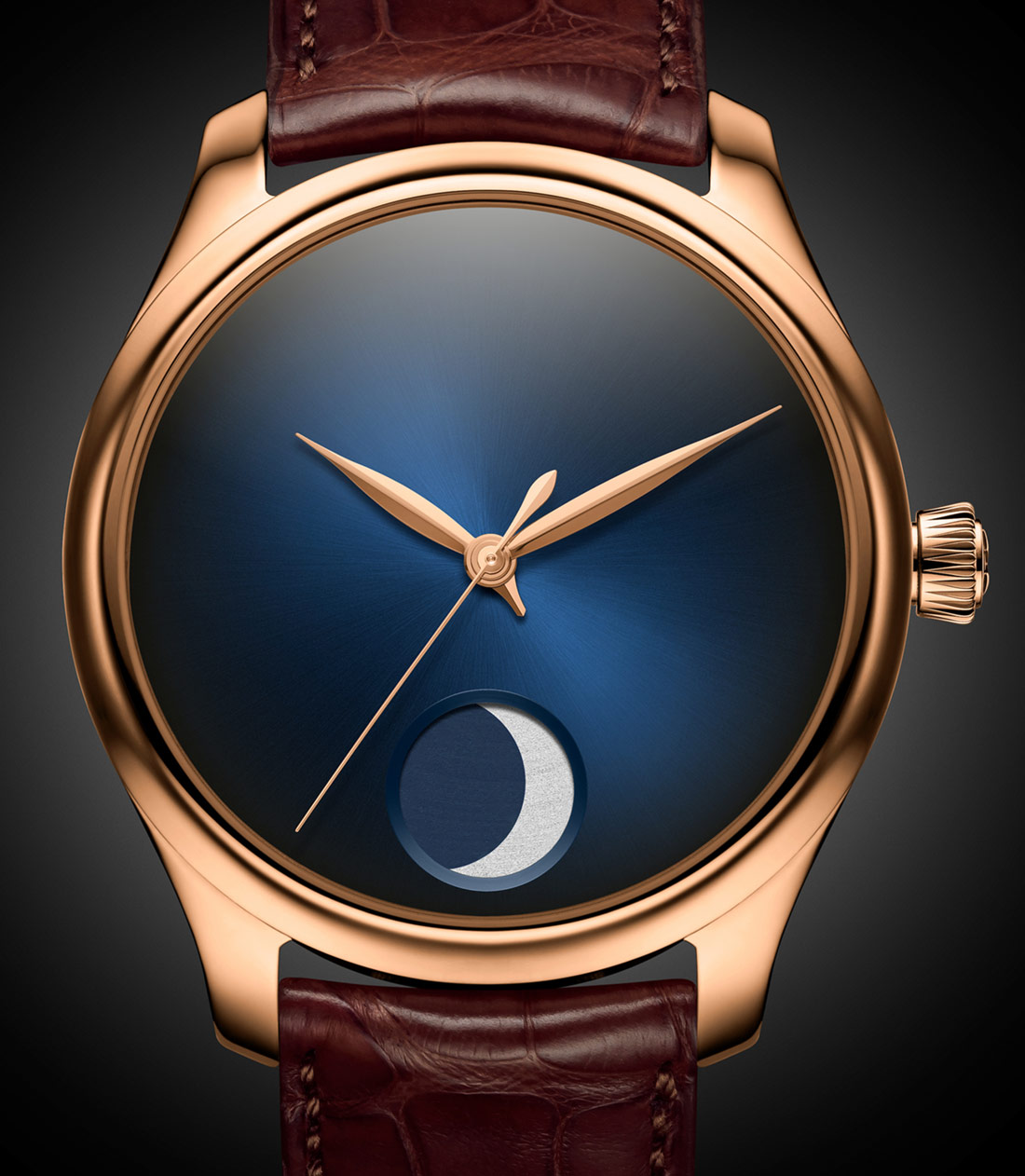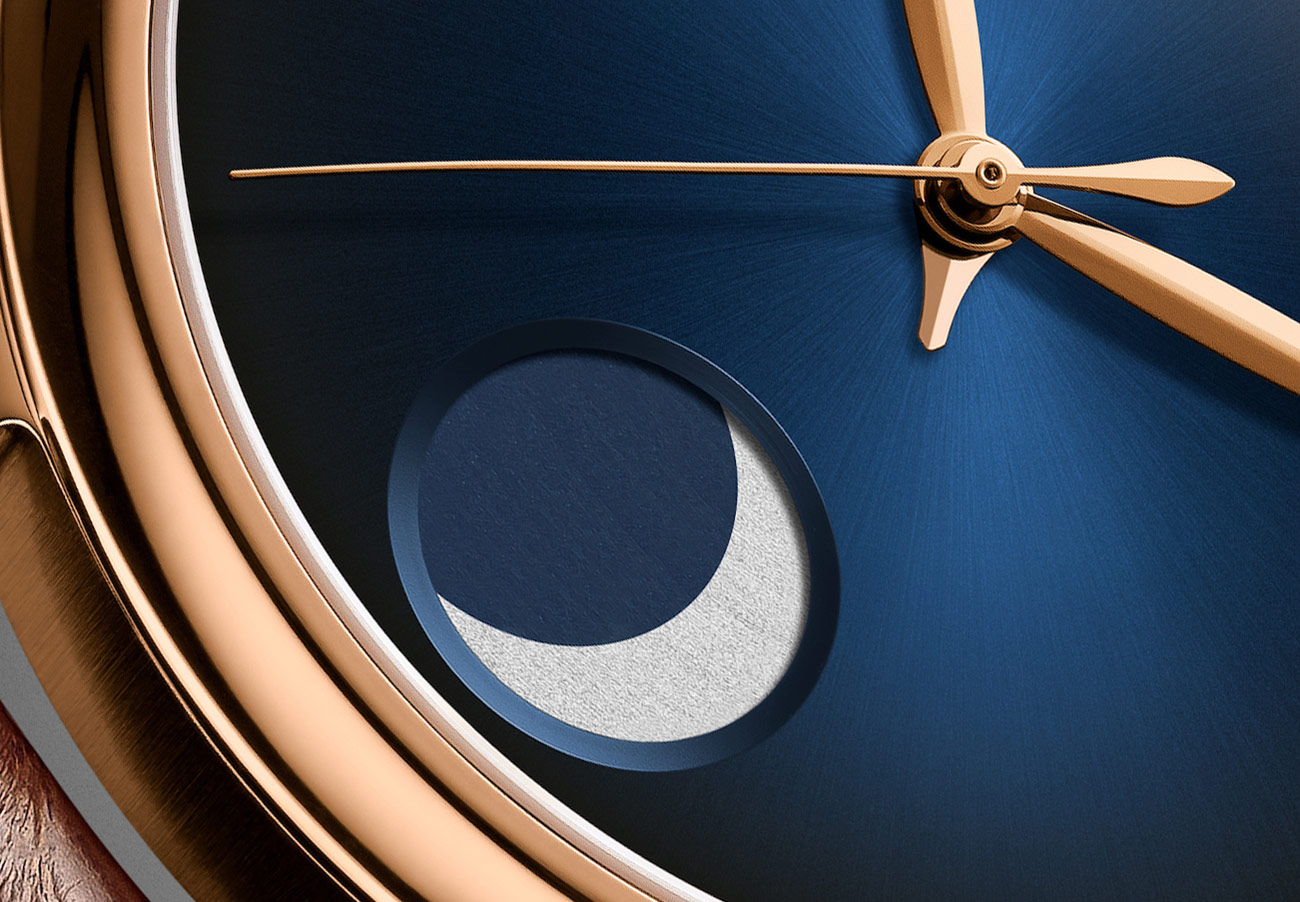Let’s all take a moment to turn our heads skywards, at night we are often able to see one of the most important satellites in existence. The moon, Earth’s natural satellite, is responsible for the changing tides and slight temperature changes at the poles of the Earth as well. It is the largest natural satellite relative to the planet it orbits, and the second most dense satellite in the solar system, after Jupiter’s moon Io. Therefore, it is no surprise that we as humans have made exquisite timepieces to track the path of the moon in our sky, and the latest creations come from the minds of H. Moser & Cie.
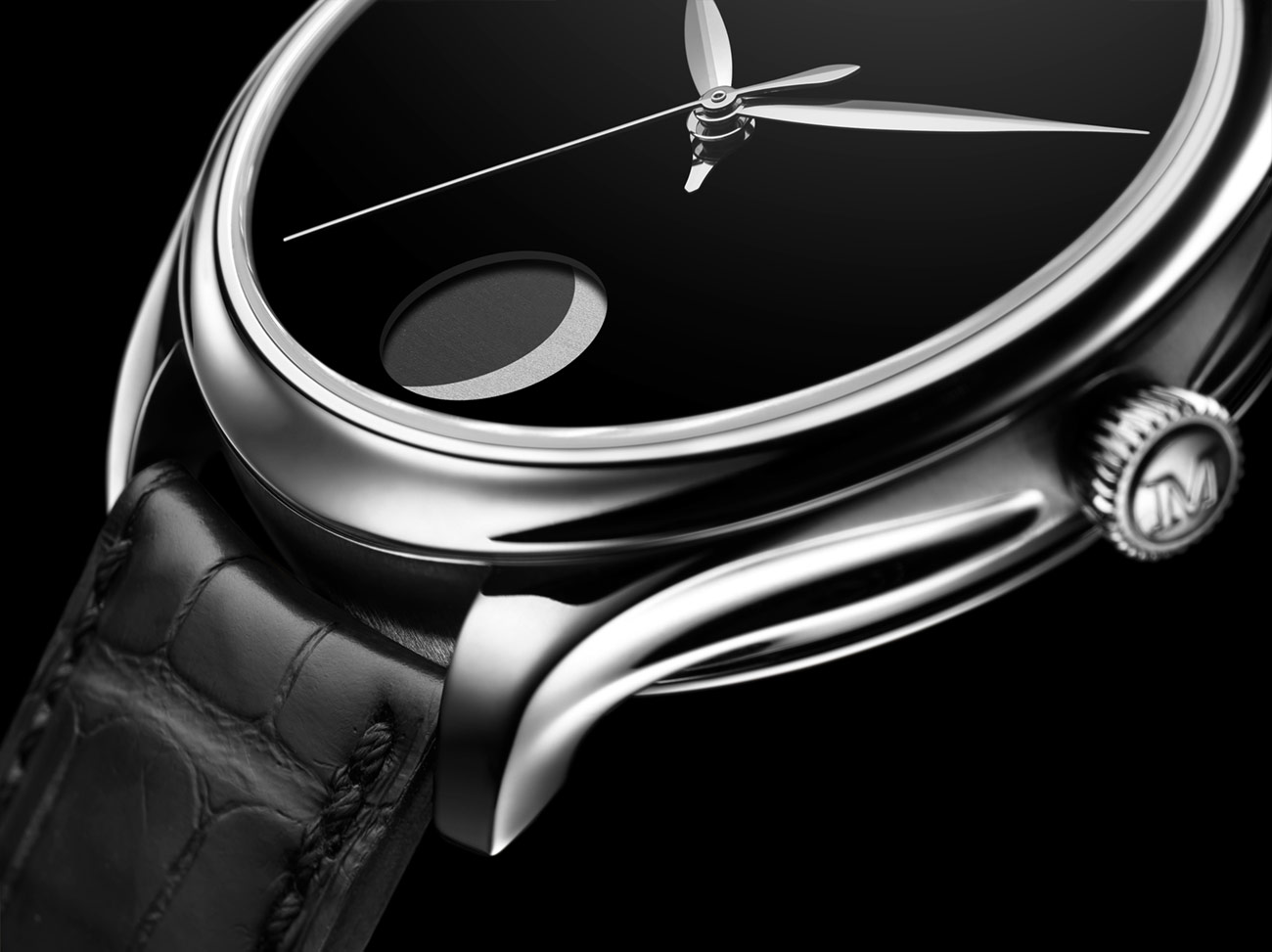
The Perpetual Moon Concept watch comes in two variations, steel and rose gold. The steel one is perhaps more appealing to me for a few aesthetic reasons. White metal is currently the “in-thing” when it comes to fashion, it’s more discreet and easier to pair with outfits. The steel itself is also rugged and less likely to scratch than gold. Finally, and most importantly, the dial of the steel version is made of Vantablack®. Vantablack® was first developed in the UK’s National Physical Laboratory, the same laboratory that made the first accurate atomic clock, and the name is an acronym of Vertically Aligned Nano Tube Arrays, followed by the colour black. It is the darkest artificial substance known to man as it absorbs up to 99.965% of visible light radiation. This makes it ideal for a watch dial, though, in order to distinguish the moonphase clearly the dark portion of the phase is painted black instead. Very few brands play around with things like Vantablack®, though it is something we’d expect from a company like H. Moser & Cie, to do things just that little bit differently.
Inside the 42mm diameter cases sits the calibre HMC 801, it’s 15 lignes in diameter (34mm) and beats at a steady 18,000 vph, it also has 28 jewels. Interestingly, the gears are not the typical shape, they are rounded which means the driving force is going through the teeth horizontally rather than at an angle which theoretically leads to longer lasting gears. It also has a Moser construction trick which I’ve mentioned before, the escapement system is modular. This doesn’t mean anything to the owner of the watch, but when they send it in for a service Moser will merely switch the module for another one that’s already been serviced, like complicated, delicate Lego bricks. Sure, this means in 60 years time when these ones are considered vintage there won’t be the same escapement system as when the watch left the factory, but that’s the price you pay for simple interchangeability. The power reserve is seven days, and the moonphase is easily adjusted via a push button on the side of the case.
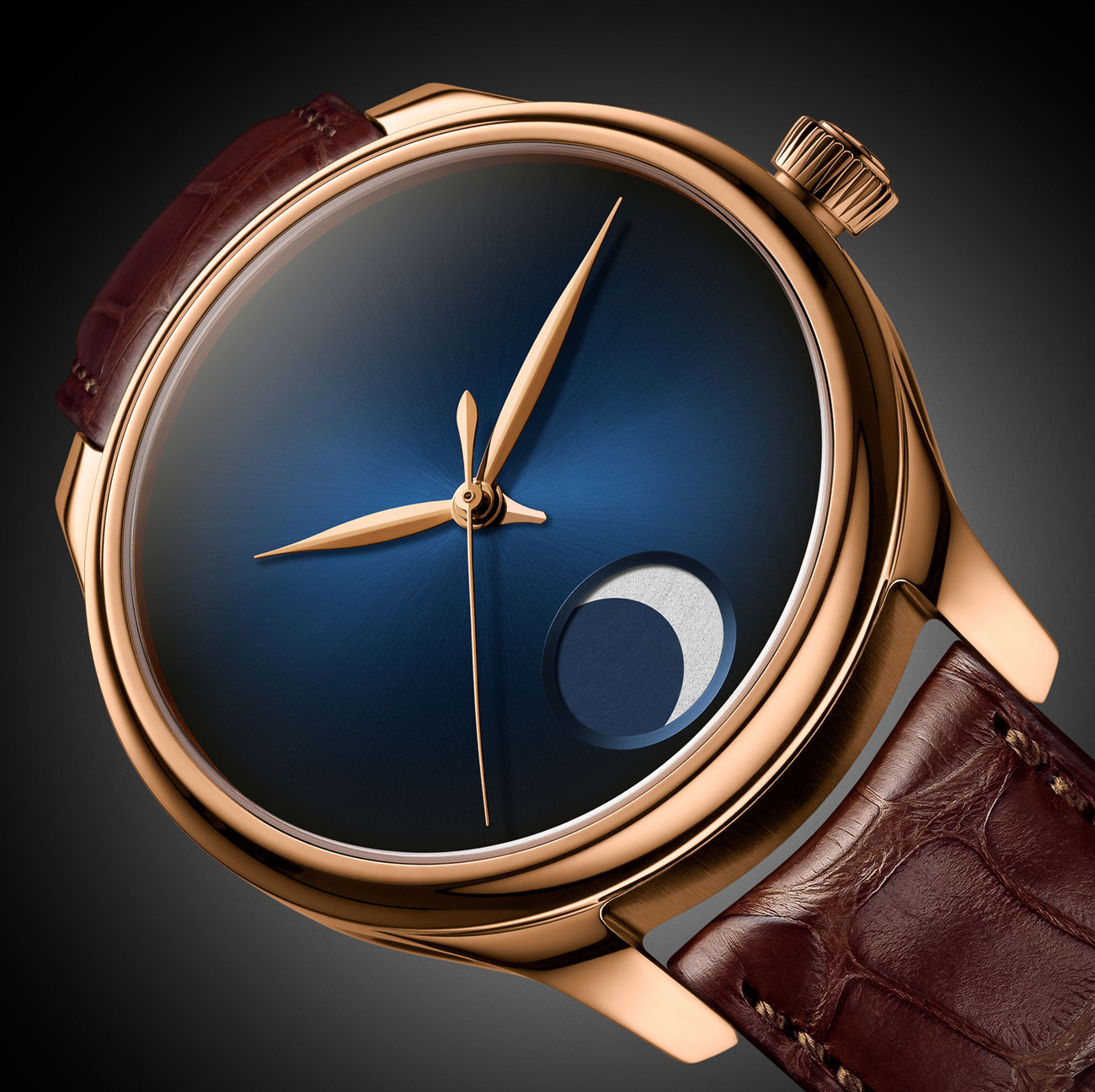
I’ve only talked about the steel variant. The gold one doesn’t have the super black dial, instead opting for a more Moser-esque fumé dial with a sunburst pattern in midnight blue. You may have noticed there’s a tiny hand hidden under the hours and seconds hands, that one indicates whether it is AM or PM. I can see the attraction of having no indices or even a logo on the dial, and on the steel one it works really well with the Vantablack® dial, but I think this is too much in the way of less is more, at least for my tastes, I know this take is trendy in the watch communities. Both of these are limited to 50 examples each. Did I mention the moonphase was one of the most accurate ever made? That’s right, the final party piece which I’ve saved until now is that the moonphase only requires an adjustment once every 1027.3 years, most of them require resetting every century, this one is much more special because of it. Visit H. Moser & Cie here.



